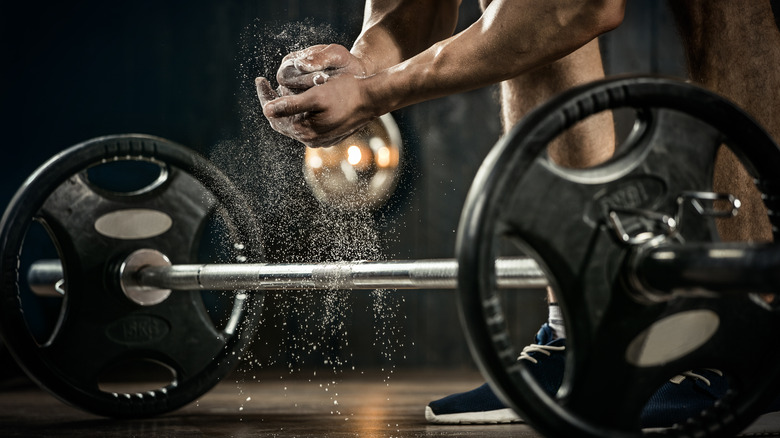Slow Reps Versus Fast Reps: Which Weightlifting Technique Is Better For You?
You know the strength training standard for beginners. It's usually about choosing a weight that's heavy enough to lift 10 times, then doing three sets of that (via Men's Health). Sure, some will advise lifting heavy weights for six reps, and others will say to do 12 to 20 reps. But how fast should you do those reps? Do you lift them slowly, emphasizing the movement in the full range of motion, or do you power through them quickly using momentum? It all depends on your goals.
According to Train Heroic, there are three main speeds. The slow speed helps emphasize good form while also controlling the movement. A normal speed might look like what you might already do. A fast speed can improve force, similar to what you might see in a CrossFit class. However, let's look a little more in-depth at speed within a rep as well as what speed works best for you.
Slow and controlled, but not too slow to build muscle and impulse
According to Muscle & Fitness, moving the weight more slowly resists the temptation to use momentum. Therefore, you're using your targeted muscle to lift the weight. Doing slow reps increases the time your muscles are under tension, which increases muscle mass. You might also want to go slow on the "negative," or the eccentric part of the movement. However, doing these eccentric reps too slowly actually reduces the exercise's effectiveness.
A 2021 review in Sports Medicine disagrees, saying that slow eccentric reps combined with faster concentric (the actual lift) reps are better for increasing muscle mass. Don't go slower than 10 seconds on any lift, though, if you want to improve muscle, according to a 2015 review in Sports Medicine.
You might also do slow eccentric reps if you want to increase impulse, which is the amount of force produced over a short amount of time (via Boxing Science). A 2022 study in the European Journal of Applied Physiology tested slow reps versus traditional reps while keeping time under tension the same. The slow condition was 10 reps with a four-second eccentric and two-second concentric lift. The traditional condition was 20 reps with two-second eccentric and one-second concentric. Impulse was greater in the slow rep condition.
To increase in strength, go fast
A 2020 study in the Journal of Sports Science & Medicine tested different rep speeds on the eccentric part of the movement to see which can work on maximum strength. One session took two seconds to lower the weight, a second session took four seconds, and a third session took six. The two-second session was able to improve strength better than the slower tempos. The researchers concluded that the slower tempo increased the time the muscles were under tension and fatigued them sooner.
A 2011 study in the Journal of Strength and Conditioning Research also found this with male weight lifters. In other words, if you're looking to increase your one-rep max, you'd be better off taking two seconds to lower the weight rather than four. However, a 2022 study in the Journal of Strength and Conditioning Research found similar strength gains whether people used slow or fast reps. Therefore, try a mix of slow and fast tempos to reach your goals (via Train Heroic).



